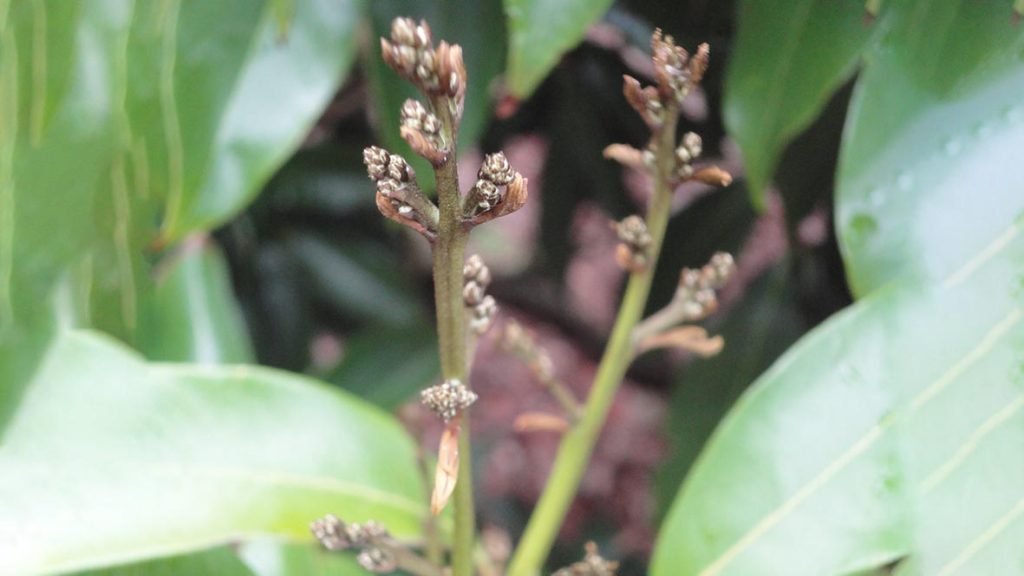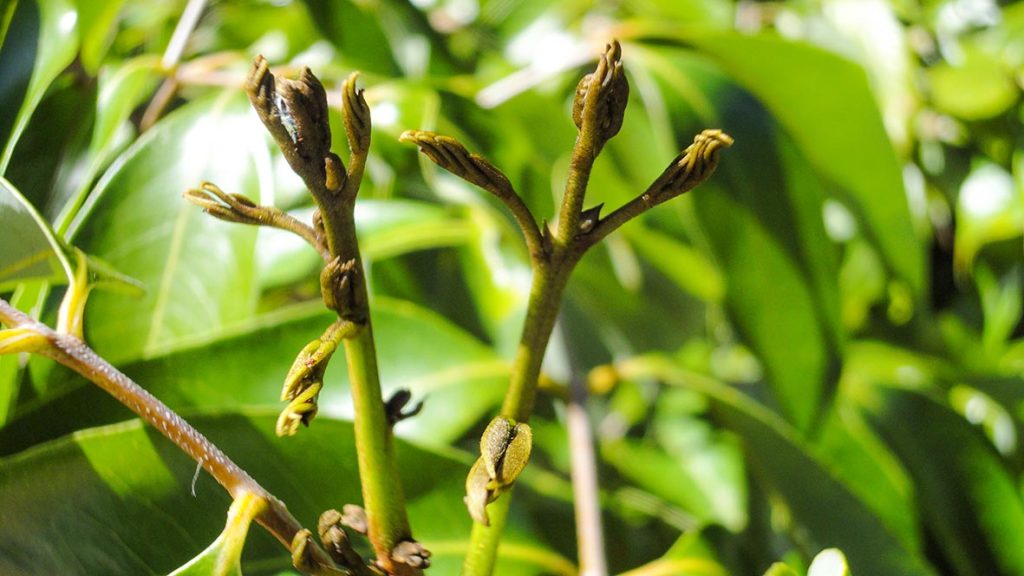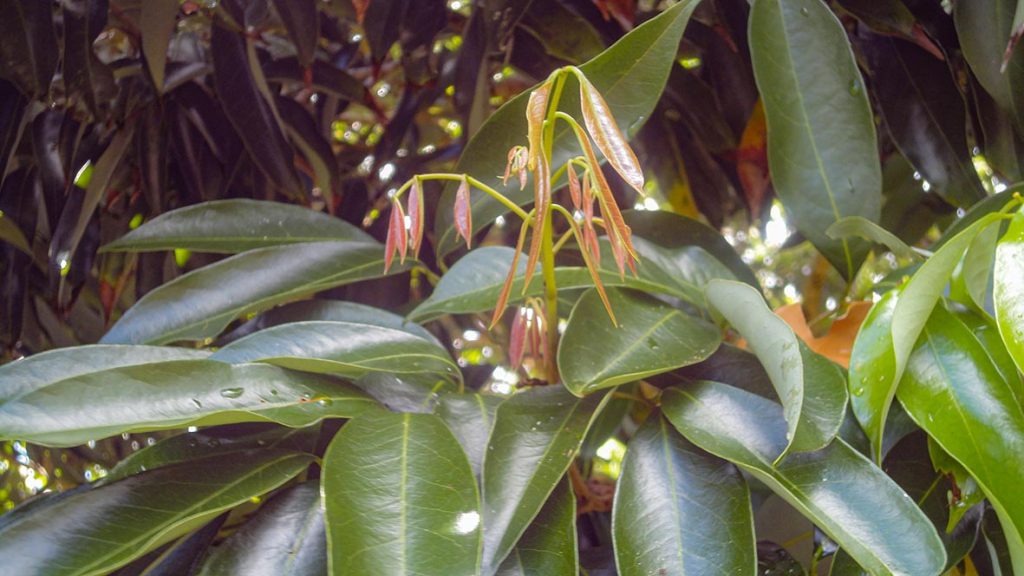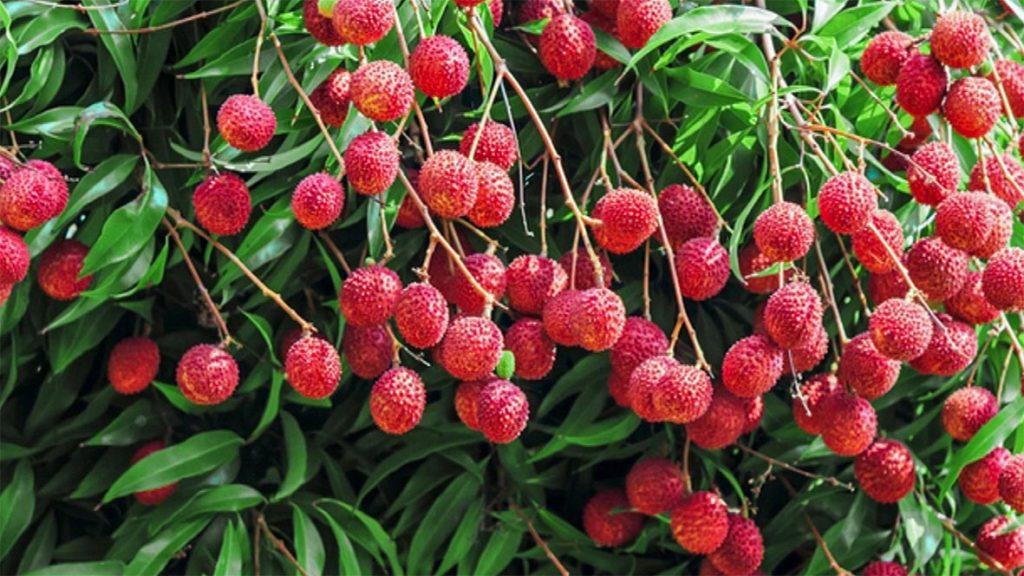Flowering in litchi is triggered by low temperatures and drought conditions which suppresses vegetative growth. Usually, abundance of water and nutrients during the months of April to May favour vegetative growth and reduce the chance of flowering in litchi trees. The abundance of soil moisture and fertilizers during the month of April to May encourage litchi trees to grow vigorously and produce new vegetative flushes instead of flower panicles.
It is thus, recommended not to apply any fertiliser/ manure or irrigate litchi trees during the months of April to May so as to create the stress conditions required to suppress development of vegetative flushes. Thus, in early winter, the buds on the terminal shoots are mature enough to flower once exposed to chilling temperatures in June to July
Flowering in litchi usually occurs between early-June to mid-July on the Central Plateau, the Eastern and Southern parts of the island and between end-June to mid-August in the northern regions of the island. In order to increase litchi fruit yield, here are some Do’s and Don’ts for the management of litchi trees during the flowering period.



Panicle Emergence
Stage - C
New Flush
DO’s
✓ Resume irrigation only after 50% flowering and increase the volume of water steadily for proper fruit development until two weeks prior to harvest
✓ Where possible, place bee-hives in litchi orchard to increase pollination and fruit set
✓ In areas exposed to strong winds, place or maintain windbreaks to protect inflorescences and minimize flower and fruit drop
DON’Ts




